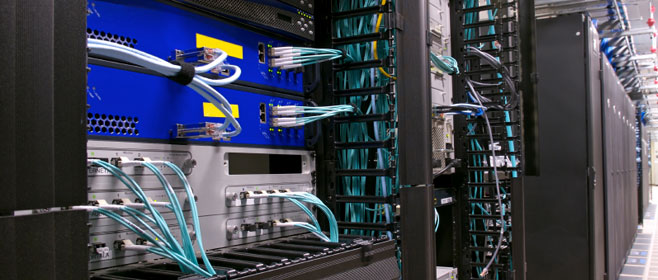
The Principles of Network Design – Part 1
 Today’s network design must be capable of providing the technical requirements of expanding and evolving IT and business demands. As a result, the task is growing in complexity and difficulty for both service providers and enterprises. The challenge is even steeper when dealing with a legacy infrastructure that must be upgraded for the adoption of newer technologies. In order to succeed, a network design may use either of the two structured approaches discussed below.
Today’s network design must be capable of providing the technical requirements of expanding and evolving IT and business demands. As a result, the task is growing in complexity and difficulty for both service providers and enterprises. The challenge is even steeper when dealing with a legacy infrastructure that must be upgraded for the adoption of newer technologies. In order to succeed, a network design may use either of the two structured approaches discussed below.
Top Down
As it simplifies the process, the top-down design approach is favored by many designers. It does so by providing more control by dividing tasks to directly aim at the scope of the design, assisting designers by letting them view solutions from the perspective of the enterprise.
Bottom Up
On the other hand, the bottom-up design approach initially chooses network technologies and design models. Unfortunately, this greatly increases the risk of design failures due to the greater possibility the network will not be able to provide the needs of the application or business.
Business Driven
An emphasis on a business-driven approach will greatly improve the prospect of attaining a strategic design that will be a success for an enterprise. This is achieved by making both business and technical objectives the central focus of network design. The following will illustrate how a Business Requirement will guide a respective IT & Network Strategy as laid out by the bullet points below:
Business Requirement IT & Network Strategy
- Cost Efficiency Consolidate and virtualize networks.
- Flexibility Make design responsive and adaptable.
- Industry Compliance Ensure compliance with industry standards.
- Continuity of Business Design resilient services and networks.
- Access Control Maintain confidentiality throughout network.
Compliance
Enterprises commonly practice strict compliance with industry standards to secure advantages for their businesses. For example, compliance with ISO/IEC 27001 Information Security Management raises the reputation of a financial services company by reducing the number of security breaches. In addition, its operational costs from downtime are minimized.
Part 2 will cover the topics of Top-Down Logic and Scope of Design.
Progressive Office Cabling
Founded in 1986, Progressive Office’s success has been a direct result of years of commitment to seeking solutions on behalf of our clients in the Washington, D.C. and New York City areas. Efficiently working together, Progressive teams get cabling installed and operating as fast as possible while minimizing disruption and downtime. Call our toll free number (800) 614-4560 today.


 If you are busy running a business every day, you probably don’t consider the
If you are busy running a business every day, you probably don’t consider the 
 The crossover
The crossover 
 As discussed in Part 1, point-to-point cabling systems are outdated and companies should strongly consider making the transition to
As discussed in Part 1, point-to-point cabling systems are outdated and companies should strongly consider making the transition to 


 As mentioned in Part 1, data center efficiency can be improved by properly planning and implementing structured cabling principles. In addition,
As mentioned in Part 1, data center efficiency can be improved by properly planning and implementing structured cabling principles. In addition, 


 As discussed in Part 1, the improper I can result in poor network performance, maintenance issues, and concealed expenses. Part 2 will discuss four more
As discussed in Part 1, the improper I can result in poor network performance, maintenance issues, and concealed expenses. Part 2 will discuss four more